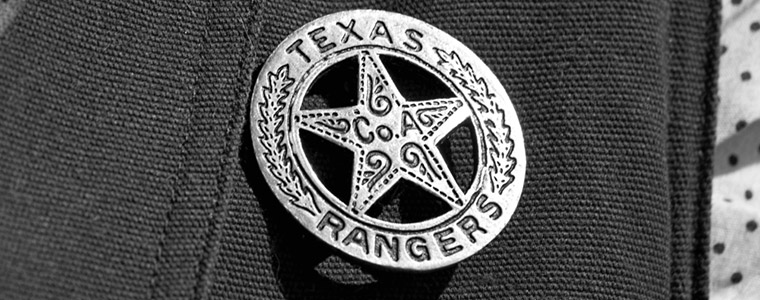Fans of legal television dramas may be all too familiar with such popularized criminal law terminology as a defendant needing to “make bail” to avoid remaining in jail because he or she is “flight risk.” The civil courts maintain a similar process in relation to personal property and real estate involved in actions for money damages. This is the process by which the courts assist plaintiffs in sequestration – or setting aside – of property so that a defendant doesn’t destroy it, conceal it, or otherwise use it up before the matter is resolved.
Through a writ of sequestration in Texas, which we discuss further in this article, the courts require defendants to post their own kind of “bail” – called a replevy bond – to make sure property essential to a lawsuit does not does become a “flight risk.”
To learn more about writs of execution beyond this article, contact judgment collection attorney in Houston, Seth Kretzer.
What Is a Writ of Sequestration?
A writ of sequestration is a legal process which occurs before a final judgment, in which a court orders the seizure or attachment of property to be maintained in the custody of a law enforcement official, under court order and supervision until the court determines a release of the property is appropriate. The purpose of the writ of sequestration is to preserve the named property pending the outcome of the litigation.
If the writ is issued by a Federal District Court in the State of Texas, procedures for service are governed by Fed R.Civ.P. 4.1 (a) and the writ is generally executed by a U.S. Marshall. If issued by a Texas State Court, Texas Civil Practice and Remedies Code Section 62 governs the process and the writ is executed by a Texas Ranger, sheriff, local police officer, constable or other peace officer licensed by the State of Texas.
For a Texas writ of sequestration, certain conditions must be met by the party seeking the writ of sequestration in Texas. That party, the creditor, must demonstrate to a court of law that it is legally entitled to possession of the property and that without the court’s intervention, the party presently in possession will “conceal, dispose of, ill-treat, waste, or destroy the property or remove it from the county during the suit.” See TX CIV PRAC & REM § 62.001 (2); TX CIV PRAC & REM § 62.021. A bond must also be posted, in an amount set by the court, before a writ will issue.
Where Is a Writ of Sequestration Applicable?
Under Texas Civil Practice and Remedies Section 62.001, et seq., a writ of sequestration is available to a plaintiff in four types of civil lawsuits:
- For title to or possession of personal property or fixtures to enforce a mortgage, lien or security interest on personal property or fixtures
- For title to or possession of real property or foreclosure on real property under the same circumstances
- For title to or possession of property from which the plaintiff has been ejected by violent means
- In a lawsuit seeking to assess the title to real property, such as to remove a cloud of title, which prevents an owner from selling his or her property
See TX CIV PRAC & REM § 62.001 (1-4).
In any event, the most important thing to remember is that in order to seek a writ of sequestration, Texas law requires that a lawsuit be “pending,” meaning the lawsuit is at any stage between the filing of a complaint and the rendering of a judgment.
Texas Civil Practice and Remedies Code Sec. 62
The Texas State Legislature has formalized court sequestration provisions in Section 62 of the Texas Civil Practice and Remedies, establishing clear guidelines for the grounds upon which writs of sequestration may be sought. Further, Section 62.003 explains that a writ of sequestration must include clear and conspicuous language communicating to the debtor that they have a right to repossession of the real or personal sequestered property if they file a “replevy bond,” with the court representing the value of the real or personal property.
Section 62.041 indicates how a writ of sequestration may be dissolved by a court, upon the defendant’s filing of a motion. The right to seek dissolution is automatic with the posting of a replevy bond. The filing of the motion stays execution of the writ until the matter is adjudicated, and a hearing on the motion to end court sequestration must occur within ten (10) days.
Learn more about writs of execution in Texas on our blog.
What Constitutes a Breach of Peace in Texas?
A breach of the peace usually precedes the need for court sequestration, when a debtor refuses to relinquish possession of collateral voluntarily and instead hides it, locks it in a garage, or refuses to abandon it. Were the debtor to simply “give up” the property at issue, such as a car owner giving their car back to the dealer when they can no longer make payments, the situation would be considered “peaceful” and neither law enforcement nor the courts would have to intervene.
The refusal takes the situation out of the realm of peaceable and requires the intervention of one of Texas’s peace officers, such as a U.S. Marshall, Texas Ranger, sheriff, constable or local police officer, who is granted authority to take possession of the property in question by way of a duly-issued writ of sequestration.
How to Obtain a Writ of Sequestration
Under Texas law, “[a] district or county court judge or a justice of the peace may issue writs of sequestration returnable to his court.” See TX CIV PRAC & REM § 62.021.
The application should be made with the help of a skilled attorney, must be made under oath, and must set forth:
- The specific facts stating the nature of the plaintiff’s claim
- The amount in controversy
- The facts justifying issuance of the writ. See TX CIV PRAC & REM 62.022
And as stated, it must also include the statement of rights of the debtor. See TX CIV PRAC & REM 62.003.
Attorney Seth Kretzer Can Help with Writs in Texas
Whether you are considering filing for a writ of sequestration or feel you may be the subject of one, you will need a lawyer with specific experience on court sequestration in Texas and who has the right knowledge and resources to help you. Contact Houston judgment collection lawyer Seth Kretzer online today to discuss your case.





